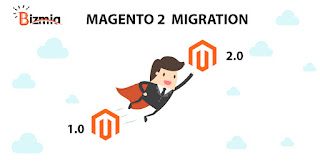There is no doubt that digital marketing is the way of the future for B2B (business to business) transactions. The B2B eCommerce industry in the United States alone targets to hit $1.8 trillion by 2023. At that point, it will account for 17% percent of all US expenditures, and that figure will rise as the minimum tenure of B2B customers begins to decline. By switching to Magento Commerce, you can easily integrate upcoming B2B commerce capabilities while investing less in-app maintenance.
10 Reasons Why Magento Is the Ideal B2B E-Commerce Platform
1: Online Shopping is Made Easy!
Through Magento’s extensive shopping options, you can allow quick and easy buying while boosting revenue. Investors who fully know whatever they want would benefit immensely from the fast order functionality since they can bypass the click process and quickly place an order for the items they need. With cheap, frictionless purchasing, you can speed up the buying process, enable quick reorders for regular procurements, and boost recurring sales.
2: Your Go to Store
Magento’s e-commerce offers all that you need to for your online marketplace. You can sell several products via service offerings and captures and handle all of your accounts effortlessly. You will set up and incorporate your Magento e-commerce platform with your ERP or CRM solutions
3: Customize as you wish
Magento seems to be an extremely scalable framework. Since it is also open-source software and developed using the standard programming language PHP and some other techniques, this means that if you have the ability, time, and budget, you can potentially configure Magento to do virtually everything you want to be doing.
4: Customer’s Fragmentation
If you’re like most of the B2B businesses, you have different prices for different clients. In most cases, you will have client segments who push various percentage incentives to different consumers. Magento helps you provide different prices to different consumers and build consumer groups that will get different pricing incentives.
5: Convenient Ordering easy Invoicing.
Magento does have an advanced order management system. It allows you to see all of the transactions in one place and click on every particular order. You will also go through a product delivery system, in which the orders can be New, Undergoing Payment, Delivery, Finished, and other such order phases. You will also invoice consumers and give them reports on the status of their orders’ shipping. Finally, Magento offers you the power and versatility to use excellent customer service for B2B customer bookings.
6: Responsive Interface
The designers will create an elegant and responsive interface for UX and UI for Magento B2B e-commerce creation. This satisfies the rising desire of smartphone consumers for smooth touchpoints. At the very exact moment, your e-commerce store is open and seamless throughout all platforms, allowing your customers to shop whenever and wherever they choose
7: Diverse Functionality
In contrast to other Online marketplaces, Magento offers an excess of rich and varied features. These features assist shop owners in managing the whole company, from merchandise development to customer experience and even advertising and branding.
8: Secure
In contrast to other websites such as WordPress or WooCommerce, Magento has fewer hacking opportunities. Whereas WordPress is by far the most targeted site with several weaknesses. The explanation for this is that Magento has several built-in applications that can be used without the possibility of adding extra plugins.
9: SEO Friendly
SEO is another excellent way to demonstrate that Magento seems to be the right tool for the websites. Magento provides users with sufficient SEO modules to improve SERP rating, including webpages (HTML and XML), URL rewrites, metadata, etc.
10: Topnotch Performance
In terms of website success, Magento is well worth being one of the pioneer sites to have the best performance and user interface available. Fast page loading speed combined with efficient query time complexity helps the website perform much better than before. This motivates consumers to investigate content or items mainly on the web page and notably reduces page trash while increasing the exchange rate.
It is recommended to hire a Certified Adobe Solution Partner and Developers for upgrading your Magento B2B store.



